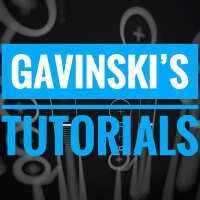Loopy Pro: Create music, your way.
What is Loopy Pro? — Loopy Pro is a powerful, flexible, and intuitive live looper, sampler, clip launcher and DAW for iPhone and iPad. At its core, it allows you to record and layer sounds in real-time to create complex musical arrangements. But it doesn’t stop there—Loopy Pro offers advanced tools to customize your workflow, build dynamic performance setups, and create a seamless connection between instruments, effects, and external gear.
Use it for live looping, sequencing, arranging, mixing, and much more. Whether you're a live performer, a producer, or just experimenting with sound, Loopy Pro helps you take control of your creative process.
Download on the App StoreLoopy Pro is your all-in-one musical toolkit. Try it for free today.
Quick Q for those who have spent a lot of time with both Nambu and Mersenne
Both Nambu and Mersenne have FM, Resonator, and Noise aspects. Obviously, Nambu has a ton more features than Mersenne, but can Mersenne produce sounds that Nambu can’t? The AppStore description mentions that the FM in Mersenne is ‘optimized for bell sounds’ but is scant on details, and I have never taken the time to see whether a range of Mersenne patches could be done identically in Nambu or not. Curious whether anyone has. I ask because I want to know whether Mersenne’s only advantage over Nambu for making bell sounds would be its simplicity and ease of use, or whether there’s any other factor involved. Thnx



Comments
I hope I can explain this correctly but the way the two are set up as far as signal path and workflow, it would be incredibly difficult to make the exact same patch in Nambu as one could make in Mersenne . At least it was for me ! Similar but not quite the same.
In my opinion Mersenne is able to produce different sounds than Nambu. There are two base tone gererators (plus noise) going into the resonator.
Just one of the generators without using the resonator sounds different to stuff i can create in Nambu. Each tone generator features a body and attack modul to sculpt the different phases of the sound. The hardness and color knobs allow to specify the harmonic overtones - but everything is based on FM (frequency modulation)
In the manual one can find the signal path:

So for each tone the body and attack module are two sine oscillators modulating the main sine oscillator. Hardness probably is the modulation depth and color the ratio. It seems that Mersenne only allows for quantised ratios (but lots of in between steps) which produce ‚nicer‘ sound than without ratio quantisation.
Each tone has 3 oscillators, the two tone path together are 6 oscillators plus a noise generator with a filter and then the resonator - so its 9 modules in total.
Nambu allows to choose and interconnect six modules, so one can‘t recreate the more complex mersenne sounds.
But one could try to recreate a single Mersenne tone path with its three oscillators plus filtered noise and resonator in Nambu.
Nambu‘s modules have alot more features, i like the envelopes with velocity and curve control for each of the env stages (there are even two attack stages and two release stages per envelop)
But i must admit i created a lot more presets for Nambu than for Mersenne.
Cheers guys! @_ki, thank you so much for taking all that time. I am wondering though, despite what it looks like on the schematic, why there wouldn't be 4 oscillators for each Tone section - a carrier and modulator for Attack, and a carrier and modulator for Body. Since Body and Attack have their own ratio controls, I thought they would each have their own modulator. So that would equal 4 oscillators total for each tone.
@Gavinski Perhaps its done that way, i don‘t know for shure. One would need tomsetupma simple patch in Mersenne and another one in any modular synth or Nambu to compare the audible result with 2 carriers or with only one.
I tested a bit around with Mersenne:

If both ratios (color) for attack and body are set to the same value and one turns down the amplitude (hardness) of either of them one only archieves half of the harmonic brightness - ie only turning in body or only turning in attack archieves about the same overtones, adding both generates more harmonics.
If there were 4 oscillators, this ‚addition‘ of modulators would not happen. And one maybe would hear ‚interference‘ between the unmodulated and the modulated carrier.
In Mersene, the modulators seem to be in full sync to the main osc (just using higher freq given by the ratio), the is no ‚interference‘. (I don‘t know the correct english term for ‚Schwebung‘ - thats the difference between two oscs super slightly out ouf phase or with minimal freq difference)
I now setup a 3 versus 4 osc version with Nambu. There is no interference with the 4 osc version (layer a mod b, c mod d) between b and d. But one does get the modulator additions like in Mersenne, only with a 3 osc setup ( a mod c, b mod c)